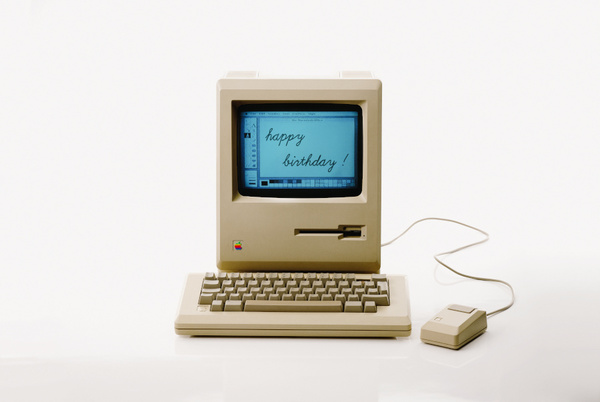Failure Is A Part Of The Process
Jobs is praised as the father of modern consumer computing, and he deserves an enormous share of credit for shepherding the internet out of desktops and into our pockets and backpacks. He was either delivering on the promise of sectors that had languished for years or creating new ones out of whole cloth. However, we could just as easily call him the father of now-forgotten products like the notorious “hockey puck” mouse, the G4 Cube, or the Pippin or for staying with the printer industry, via the LaserWriter, for far too long.
Jobs was no stranger to failure. After all, he’d first left Apple in part over the disastrous launch of the Apple III and spent years in the tech wilderness with his NeXT platform, only to return in part thanks to a lucky investment in Pixar and the stumbles of previous CEO John Sculley. And he took these products landing with a relative thud in stride. He knew that not all products were going to be winners, but he also knew that the right thing at the right time made up for them.

Tight Focus
Part of the reason Apple was so innovative is that the company, under Jobs, was focused. When he returned to the company officially in 1997, among the first things he did was substantially cut Apple’s product line. Instead of custom Macs for dozens of different customer bases, Jobs laid down the rules that the company would focus on four products: One desktop model and one portable model for the personal consumer market and the business market.
And until 2001, that was it. Those four product categories were the only ones Apple sold in, with the iBook, iMac, G3 Mac, and MacBook. When Apple did debut a new product in October 2001, it was completely outside those categories as well: It was the iPod, a personal music player that worked with Macs. The focus on just those products had, in the space of five years, substantially repaired Apple’s reputation and made the company profitable enough that Jobs was willing to consider a fifth
This includes focusing on the product, not the potential profits from said product. We tend to cherry-pick the successes of a figure like Jobs, which forgets that at the time, there was no guarantee that products like the iPod, the iPad, or even the mighty iPhone were going to be the hits that they were, let alone the music stores and app stores that would ultimately make Apple one of the most profitable companies in history. Jobs just wanted his product to hit internal goals.
Clear, Simple Goals
Part of the reason Apple took off under Jobs’ ownership is that he had a clear set of goals that applied to all products. They had to be not just easy to use but delightful and elegant to use. They had to have a distinct, pleasing look. And they had to solve a problem or perform the task they were bought for smoothly and quickly.
The iPod is an excellent example of these goals in action. In the shadow of the iPhone, it’s easy to forget that the iPod was the original pocket-sized must-have item. Yet, at the time, it sold millions of units.
Part of this was the design. Before the iPod, personal music players for MP3s had existed, but they were little more than card readers, powered by AA batteries, with a headphone port soldered in. They were clunky, hard to use, had awkward interfaces and controls, and not much room. Some didn’t even tell you what song was playing.
The iPod had plenty of room for the large CD collections people were ripping into MP3 form, had a set of controls designed to be used with one hand, had an internal battery that was as simple to charge as plugging a cord into a computer (one of the first devices, we should note, to do this), and had a large screen.
Clearly Held Ownership
Jobs may have been the face of the company, but he owned the entire innovation process from end to end, with all of its successes and failures. Consider that Jobs, despite his infamously prickly personality, never humiliated an engineer in public or tried to pass the blame for a failed product. He simply accepted that the product had failed and moved on.

Think Beyond Incremental Innovation
As strange as this may sound, nothing about the iPhone on paper was revolutionary. Smart devices had been around for years. Apple itself had the Newton and the never-released WALT in its archives.
The iPhone was a revolution because Jobs’ goals required him to leap ahead of the rest of the industry. The iPhone was designed to be elegant; you didn’t need to poke at it with a stylus. It didn’t make you navigate a dozen menus to send an email. You didn’t need to use either a built-in keyboard or tap the same button repeatedly just to pick out a word.
In other words, the iPhone solved a bunch of annoying communications problems by making the device easy to use. The industry has never looked back.
Have High Standards
Finally, when a product didn’t meet Jobs’s expectations, he seldom released them, and, in the case of products like 2006’s iPod Hi-Fi, he tended to regret it when he did. That’s not to say Apple didn’t learn from these products; you can see the lessons learned from the Hi-Fi’s widely criticized remote reflected in the Apple HomePod, released more than a decade later. Yet Jobs knew when it was time to admit an idea wasn’t working, most of the time, and moved on to other ideas.
There’s much to learn from Steve Jobs as a leader in innovation. To learn more about the past and future of innovation strategy, request a demo!
Most Recent Posts
Explore the latest innovation insights and trends with our recent blog posts.













